Trojan:Win32/UnusualASEP Malware
Trojan:Win32/UnusualASEP is a dangerous form of malware, posing as an Adobe Reader installer, designed to deliver and execute additional cyber threats on systems that have already been compromised. It is classified as a loader malware, which means its primary role is to infiltrate a system, create a backdoor, and then download or spread other malicious programs without the user’s consent.
At present, numerous harmful applications are being used as distribution channels for Trojan:Win32/UnusualASEP, which significantly increases the risk of infection for users who frequently download software from unreliable sources. Torrent sites and freeware platforms are among the most common ways in which this malware spreads, making them particularly risky for users who do not verify the legitimacy of their downloads.
Additionally, many unsuspecting users fall victim to Trojan:Win32/UnusualASEP through phishing attacks, where they receive deceptive emails containing attachments that, when opened, secretly install the malware on their system without their knowledge.
![Trojan:Win32/UnusualASEP - How to Remove It [Solved]](https://cdn.sensorstechforum.com/wp-content/uploads/2025/02/TrojanWin32UnusualASEP-virus-removal-guide-1024x576.jpg)
Trojan:Win32/UnusualASEP Summary
| Name | Trojan:Win32/UnusualASEP |
| Type | Trojan Horse / Malware |
| Brief Description | Fake setup malware that can perform various malicious activities on the system. |
| Symptoms | Your computer could become very slow and even freeze from time to time; excessive CPU usage is also possible. |
| Distribution Technique | Bundled downloads. Web pages which may promote it. |
| Detection Tool |
See if the System is impacted by Trojan:Win32/UnusualASEP
Down Load
Malware Removal Tool
|
Trojan:Win32/UnusualASEP Loader – Why Is It on My System?
If you have received an alert that your system has detected the presence of Trojan:Win32/UnusualASEP Loader, it means that your computer has already been compromised and that this malware has successfully infiltrated your system. Unlike standalone viruses, this loader does not act alone—it serves as an entry point for more severe cyber threats. It typically disguises itself as a legitimate file or program, tricking users into unknowingly installing it while downloading or setting up another application. Many users accidentally install it when they download software from unreliable websites, install cracked programs, or click on deceptive advertisements that promote fake updates or software downloads. Because this malware is often bundled with free programs, users may not even realize they have installed it until they begin experiencing performance issues, increased pop-up ads, or unauthorized system changes.
Key Features and Risks of Trojan:Win32/UnusualASEP Malware
Spreading Malicious Software
Trojan:Win32/UnusualASEP acts as a central distributor for various forms of malware, including trojans, spyware, keyloggers, and even ransomware that locks users out of their own files. Once installed, this malware works in the background, searching for vulnerabilities in the system and using them to install additional malicious programs without the user’s permission. It primarily spreads through deceptive phishing emails, malicious attachments, compromised websites, or by disguising itself within seemingly harmless free software that users download from untrusted sources.
System Exploitation
Once active, Trojan:Win32/UnusualASEP takes advantage of security weaknesses in an operating system or installed software to maintain access and avoid detection. It may modify system files, alter registry settings, or use advanced evasion techniques to stay hidden from antivirus programs. Because it operates silently in the background, it can go undetected for long periods, allowing attackers to use the infected system for malicious activities without the user realizing what is happening.
Stealing Sensitive Information
This trojan is particularly dangerous because it has the ability to steal private and sensitive information from an infected system. It can extract login credentials, banking details, saved passwords from browsers, and even record user activity through keylogging techniques.
Cybercriminals often use the stolen data to gain unauthorized access to accounts, conduct financial fraud, or sell the information on underground markets on the dark web. Because users rarely notice this activity, they may not realize that their accounts have been compromised until they see fraudulent transactions or receive security warnings from services they use.
Remote Command Execution
Trojan:Win32/UnusualASEP is designed to communicate with an external command-and-control server, which is controlled by cybercriminals. Through this connection, hackers can remotely send commands to the infected system, download additional malware, or even take control of certain system functions. This means that an infected device could be used as part of a botnet, launching large-scale cyberattacks or distributing malware to other victims without the user being aware.
Concealment and Persistence
One of the most concerning aspects of this malware is its ability to stay hidden and persist within an infected system. It uses advanced obfuscation techniques to avoid detection by security programs, such as disguising its code or encrypting its files so that traditional antivirus solutions struggle to identify and remove it. Additionally, it often modifies crucial system settings, ensuring that it runs every time the device is started. Even if users attempt to remove the malware manually, it may reinstall itself through hidden processes or compromised system files.
How to Remove Trojan:Win32/UnusualASEP Malware
If your device has been infected with Trojan:Win32/UnusualASEP malware, it is crucial to take immediate action to prevent further damage or data theft. This malware is highly sophisticated and may not be removable through simple manual methods, as it embeds itself deeply within system processes. To effectively remove it, follow these steps:
1. Disconnect from the Internet – As long as your system is connected to the internet, the malware can continue receiving commands and transmitting stolen data. Disconnecting immediately can help limit its ability to communicate with remote servers.
2. Use a Reputable Anti-Malware Tool – Run a full system scan using a trusted anti-malware program to detect and eliminate Trojan:Win32/UnusualASEP and any associated threats.
3. Boot Into Safe Mode – If the malware prevents your security tools from running, try booting your computer into Safe Mode with Networking, which can help disable harmful processes.
4. Check Installed Programs and Extensions – Open your system settings and look for any unfamiliar programs, especially ones installed around the time you noticed unusual activity.
5. Reset Your Browser Settings – Since this malware can alter browser settings, it’s recommended to reset your web browser to remove any unwanted changes or extensions.
6. Update Your Operating System and Software – Keeping your system updated ensures that security vulnerabilities are patched, reducing the chances of reinfection.
By following these steps and staying cautious about what you download and install, you can minimize the risk of future infections. Cybercriminals continue to evolve their attack methods, so remaining vigilant and proactive in securing your system is the best way to protect your personal data and device from malware threats.
Preparation before removing Trojan:Win32/UnusualASEP.
Before starting the actual removal process, we recommend that you do the following preparation steps.
- Make sure you have these instructions always open and in front of your eyes.
- Do a backup of all of your files, even if they could be damaged. You should back up your data with a cloud backup solution and insure your files against any type of loss, even from the most severe threats.
- Be patient as this could take a while.
- Scan for Malware
- Fix Registries
- Remove Virus Files
Step 1: Scan for Trojan:Win32/UnusualASEP with SpyHunter Anti-Malware Tool
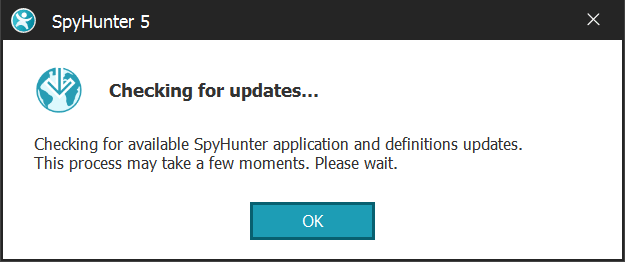
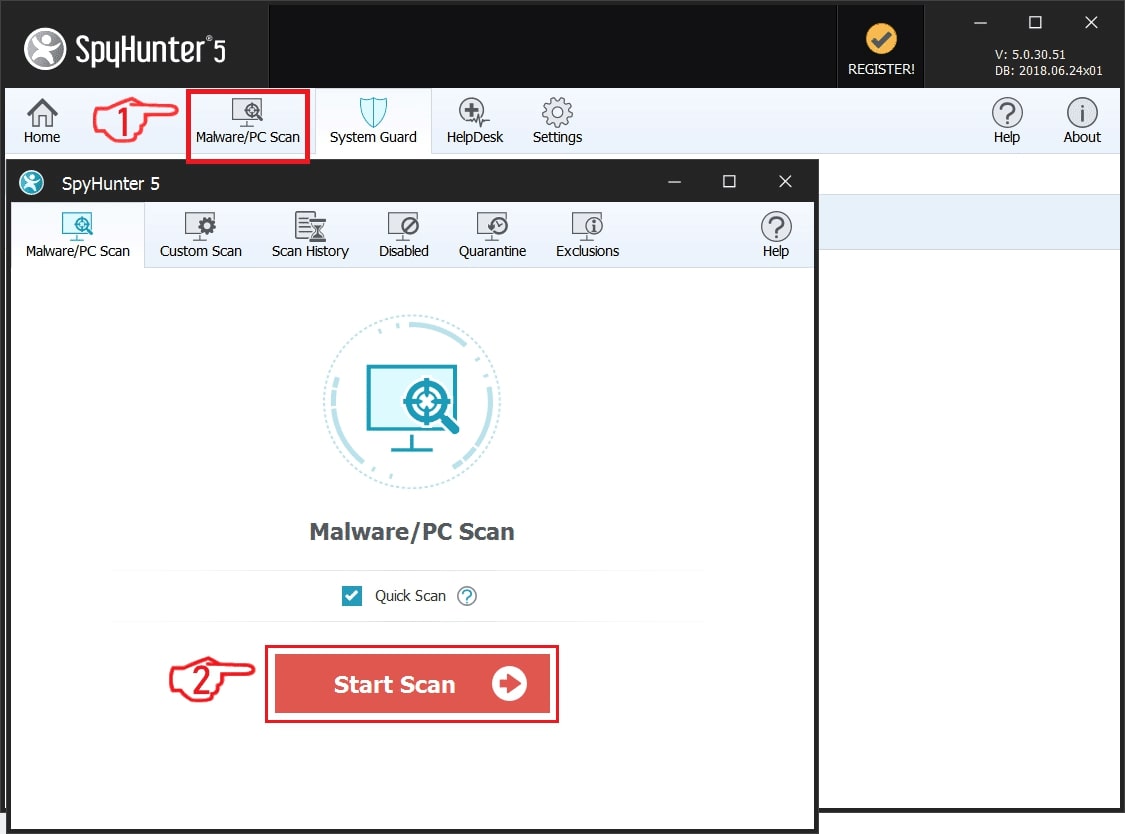
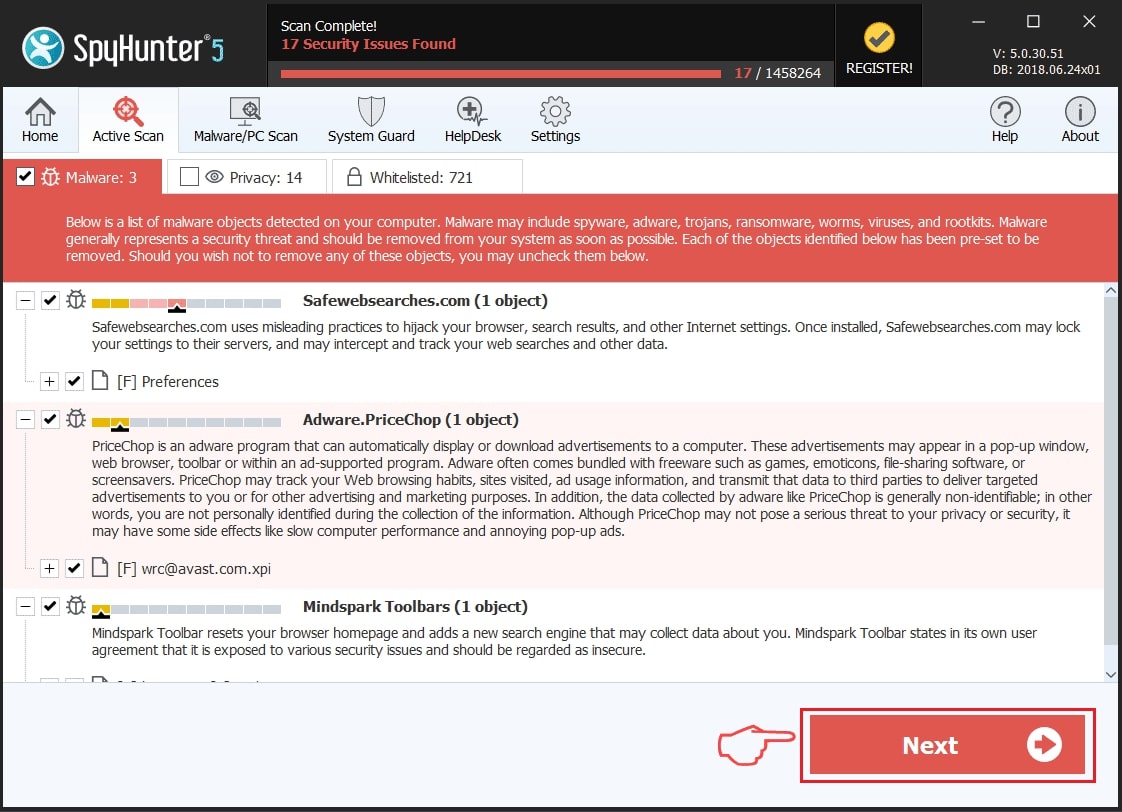
Step 2: Clean any registries, created by Trojan:Win32/UnusualASEP on your computer.
The usually targeted registries of Windows machines are the following:
- HKEY_LOCAL_MACHINE\Software\Microsoft\Windows\CurrentVersion\Run
- HKEY_CURRENT_USER\Software\Microsoft\Windows\CurrentVersion\Run
- HKEY_LOCAL_MACHINE\Software\Microsoft\Windows\CurrentVersion\RunOnce
- HKEY_CURRENT_USER\Software\Microsoft\Windows\CurrentVersion\RunOnce
You can access them by opening the Windows registry editor and deleting any values, created by Trojan:Win32/UnusualASEP there. This can happen by following the steps underneath:
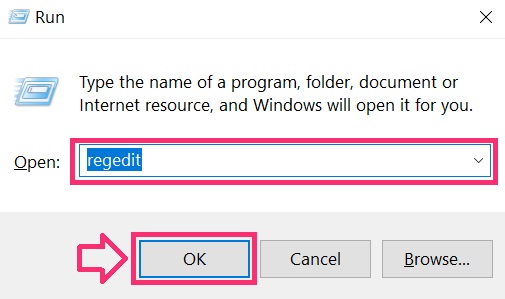

 Tip: To find a virus-created value, you can right-click on it and click "Modify" to see which file it is set to run. If this is the virus file location, remove the value.
Tip: To find a virus-created value, you can right-click on it and click "Modify" to see which file it is set to run. If this is the virus file location, remove the value.Step 3: Find virus files created by Trojan:Win32/UnusualASEP on your PC.
1.For Windows 8, 8.1 and 10.
For Newer Windows Operating Systems
1: On your keyboard press + R and write explorer.exe in the Run text box and then click on the Ok button.
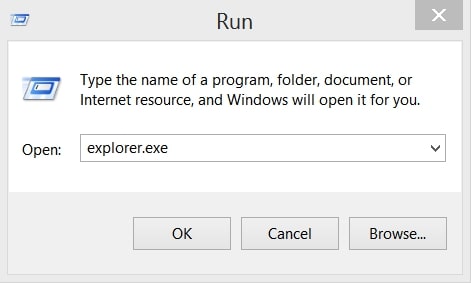
2: Click on your PC from the quick access bar. This is usually an icon with a monitor and its name is either “My Computer”, “My PC” or “This PC” or whatever you have named it.
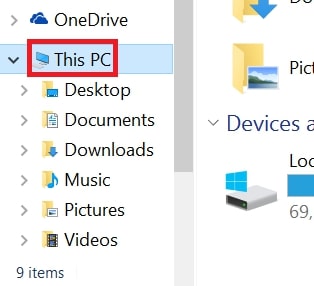
3: Navigate to the search box in the top-right of your PC's screen and type “fileextension:” and after which type the file extension. If you are looking for malicious executables, an example may be "fileextension:exe". After doing that, leave a space and type the file name you believe the malware has created. Here is how it may appear if your file has been found:
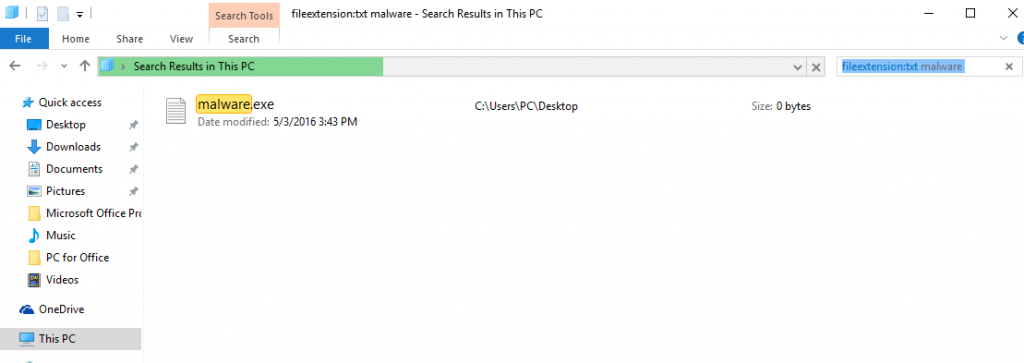
N.B. We recommend to wait for the green loading bar in the navigation box to fill up in case the PC is looking for the file and hasn't found it yet.
2.For Windows XP, Vista, and 7.
For Older Windows Operating Systems
In older Windows OS's the conventional approach should be the effective one:
1: Click on the Start Menu icon (usually on your bottom-left) and then choose the Search preference.
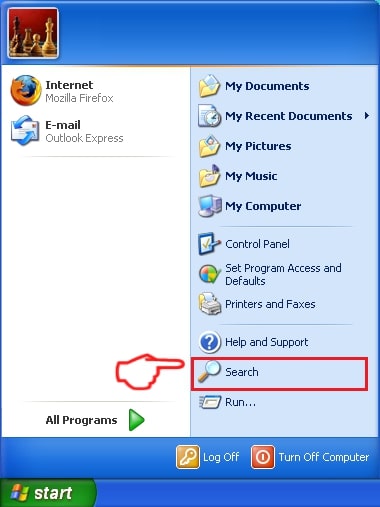
2: After the search window appears, choose More Advanced Options from the search assistant box. Another way is by clicking on All Files and Folders.
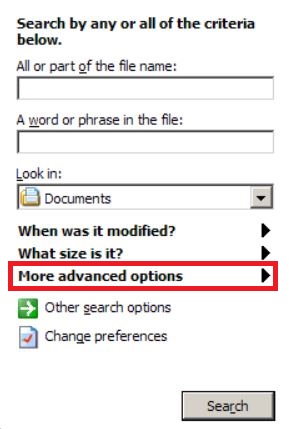
3: After that type the name of the file you are looking for and click on the Search button. This might take some time after which results will appear. If you have found the malicious file, you may copy or open its location by right-clicking on it.
Now you should be able to discover any file on Windows as long as it is on your hard drive and is not concealed via special software.
Trojan:Win32/UnusualASEP FAQ
What Does Trojan:Win32/UnusualASEP Trojan Do?
The Trojan:Win32/UnusualASEP Trojan is a malicious computer program designed to disrupt, damage, or gain unauthorized access to a computer system. It can be used to steal sensitive data, gain control over a system, or launch other malicious activities.
Can Trojans Steal Passwords?
Yes, Trojans, like Trojan:Win32/UnusualASEP, can steal passwords. These malicious programs are designed to gain access to a user's computer, spy on victims and steal sensitive information such as banking details and passwords.
Can Trojan:Win32/UnusualASEP Trojan Hide Itself?
Yes, it can. A Trojan can use various techniques to mask itself, including rootkits, encryption, and obfuscation, to hide from security scanners and evade detection.
Can a Trojan be Removed by Factory Reset?
Yes, a Trojan can be removed by factory resetting your device. This is because it will restore the device to its original state, eliminating any malicious software that may have been installed. Bear in mind that there are more sophisticated Trojans that leave backdoors and reinfect even after a factory reset.
Can Trojan:Win32/UnusualASEP Trojan Infect WiFi?
Yes, it is possible for a Trojan to infect WiFi networks. When a user connects to the infected network, the Trojan can spread to other connected devices and can access sensitive information on the network.
Can Trojans Be Deleted?
Yes, Trojans can be deleted. This is typically done by running a powerful anti-virus or anti-malware program that is designed to detect and remove malicious files. In some cases, manual deletion of the Trojan may also be necessary.
Can Trojans Steal Files?
Yes, Trojans can steal files if they are installed on a computer. This is done by allowing the malware author or user to gain access to the computer and then steal the files stored on it.
Which Anti-Malware Can Remove Trojans?
Anti-malware programs such as SpyHunter are capable of scanning for and removing Trojans from your computer. It is important to keep your anti-malware up to date and regularly scan your system for any malicious software.
Can Trojans Infect USB?
Yes, Trojans can infect USB devices. USB Trojans typically spread through malicious files downloaded from the internet or shared via email, allowing the hacker to gain access to a user's confidential data.
About the Trojan:Win32/UnusualASEP Research
The content we publish on SensorsTechForum.com, this Trojan:Win32/UnusualASEP how-to removal guide included, is the outcome of extensive research, hard work and our team’s devotion to help you remove the specific trojan problem.
How did we conduct the research on Trojan:Win32/UnusualASEP?
Please note that our research is based on an independent investigation. We are in contact with independent security researchers, thanks to which we receive daily updates on the latest malware definitions, including the various types of trojans (backdoor, downloader, infostealer, ransom, etc.)
Furthermore, the research behind the Trojan:Win32/UnusualASEP threat is backed with VirusTotal.
To better understand the threat posed by trojans, please refer to the following articles which provide knowledgeable details.


